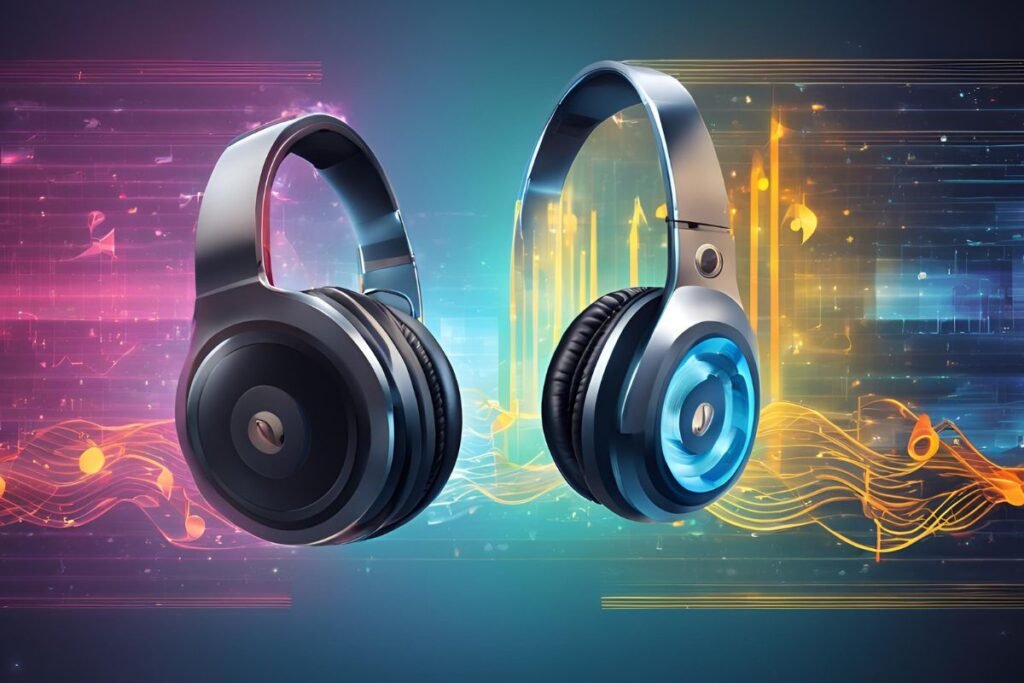Nowadays, we all listen to audio files (be it your favorite Spotify song, a podcast, or the soundtrack to a YouTube video). However, not all audio files are created equally. The most widely used formats are WAV and MP3, and each has its advantages and disadvantages.

So how are these two formats different, and when should you use one or the other? Let’s delve into the WAV vs MP3 debate and find out which one is better for you.
What is WAV & MP3?
WAV stands for Waveform Audio File Format and was developed by Microsoft and IBM in the early 1990s. The format is uncompressed raw data that shows the sound data as it was recorded. This means WAV files are huge but great for professionals who want the best sound possible.
A WAV file is the digital “script” of the sound and preserves all of the tiniest details. Because they are uncompressed, they have more sound information, which is why they have better fidelity.
MP3, or MPEG-1 Audio Layer 3, is a format used since the mid-1990s to store audio files in a compressed format that has no dramatic impact on quality. It compresses “lossy,” meaning some audio data are discarded to reduce the file size. It also makes MP3 files much smaller, which is very useful for sharing and storing a large number of tracks.
MP3 changed music consumption forever, as you can store thousands of songs on your phone. But there’s a price to be paid for that compression: the more compressed an MP3 file is, the more quality you lose.
WAV vs MP3: Which one is better?
To answer the question neither is better and it will depend on the situation, but for better sound, WAV is the winner.
WAV is more robust since it preserves all original sound information and can be used for professional editing and studio recordings (although it takes up a lot of space).
MP3, meanwhile, reduces file size to make music downloadable, shareable, and streamable, but at a cost in quality and inappropriate for serious editing. WAV for better sound and MP3 for speed and compression.
What is The Difference Between WAV and MP3?
Compressed vs Uncompressed format
WAV is uncompressed, and MP3 is compressed. This means that all the original sound data is retained in WAV files, and some of this data is sacrificed in MP3 for the sake of file size.
File Size Differences
The file size of WAVs is considerably larger than MP3. A three-minute WAV file can be 30–40 MB, while a 3-minute MP3 file may be only 3–5 MB. WAVs are also more cumbersome to store but great for editing, while MP3s are great for portability.
Sound Quality
WAVs are better because all of the audio information is encoded, while MP3s compress the data to save space. In most applications, the listener would barely detect the difference, but enthusiasts and professional musicians will ideally opt for WAV due to its pure quality.
Size Comparison – WAV vs MP3
WAVs are uncompressed, meaning they’re up to 10 times larger than an MP3 of the same length. As an illustration, a 4-minute song can have a size of 40 MB as a WAV and 4 MB as an MP3 – which is a more useful size for most purposes, particularly on a device with limited memory.
When to Use WAV Files
If you’re producing music or if there is anything you do that relies on great audio, WAV is your best choice. WAV is also a great solution for saving and protecting audio as it preserves sound in its original quality.
When to Use MP3 Files
MP3 is excellent for your daily routine – playing music on your mobile phone, downloading music, or sharing files instantly. You don’t have to worry about perfect sound quality: MP3’s compressed format is suitable for most non-professional listening.
MP3 vs WAV for Different Use Cases
- Music Enthusiasts: WAV is often the preference of audiophiles who demand the highest possible quality with high-end audio equipment. MP3 is more usable for the average listener who simply wants to listen while traveling but doesn’t want to use much storage space.
- Podcasts: WAV files are perfect for podcast production and editing. However, once edited, converting the finished file to MP3 is common so it can be easily shared and streamed without using too much bandwidth.
- Video Creation: WAV files are commonly used in video editing for the highest quality of sound. However, when the output is exported for viewing online, the audio is generally converted to MP3 or another compressed format to minimize file size.
- Gaming: Audio is crucial in creating an immersive environment in games. Often, WAV files are utilized for their quality at the production level, but as with video, the audio is compressed to conserve space in the final product.
Conclusion
In the WAV vs MP3 debate, it all depends on your requirements. While WAV is better for professionals, MP3 is simpler and reduces file size. Consider these differences when choosing which format is right for your use case.
If you enjoyed this article and are into speakers & sounds make sure you check out what can you use inside a speaker for baffling!


